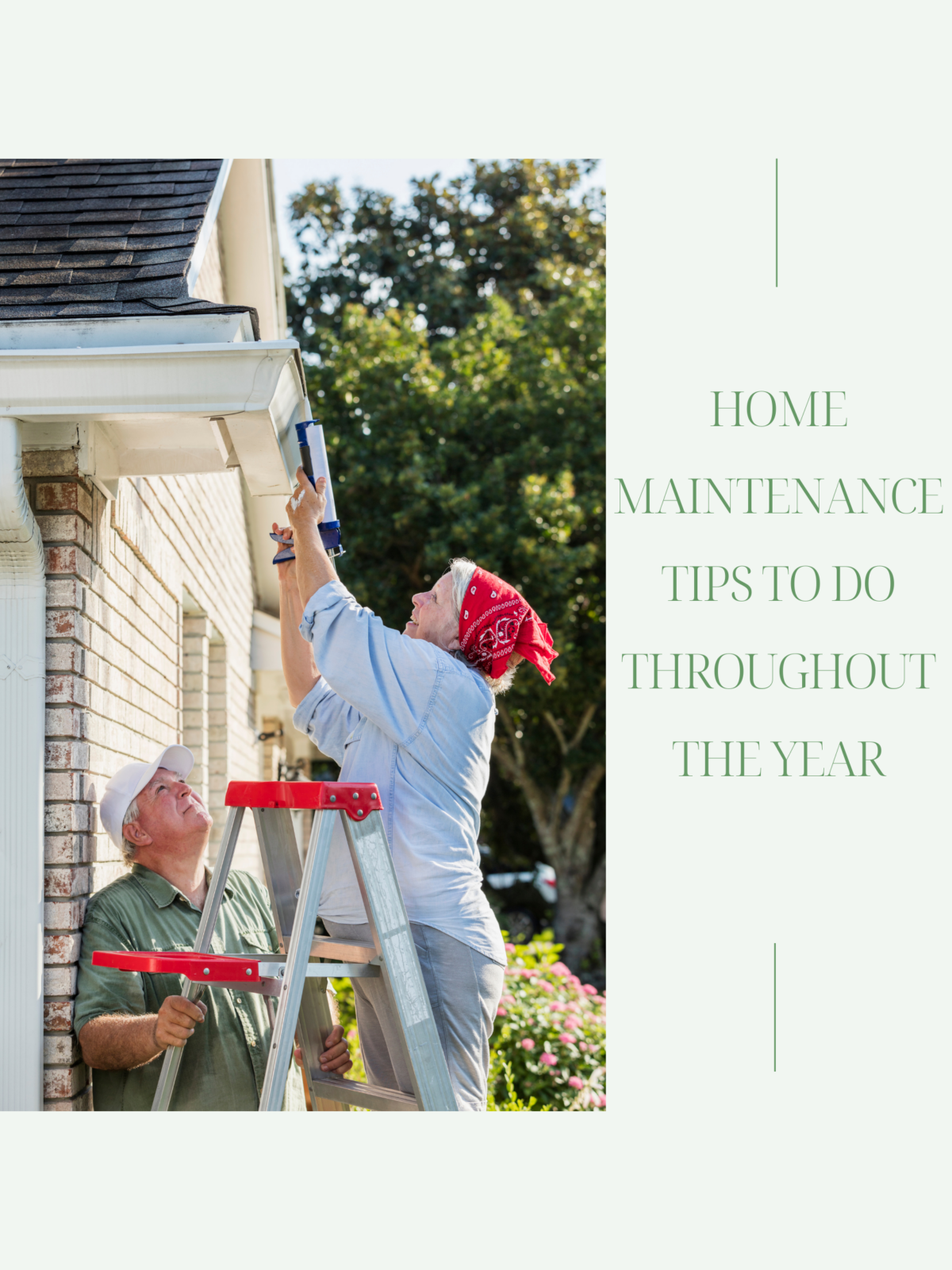Just as we change up our personal routines through the seasons, our home maintenance schedule is just as important for its upkeep. After all, it may just be our life’s biggest investment, so maintaining it is extremely important. Keeping up with your home’s exterior, appliances, heating and cooling, plumbing, and electrical systems will help to ensure smooth sailing and keep repairs to a minimum. A regular maintenance schedule of these things will also keep your home looking its best.
Just as each season brings new weather, with it comes a different list of chores to take on. Here are some great tips to follow all year long to keep your home running like a well-oiled machine.
Spring
Exterior
The weather is finally starting to warm up again, it’s time to open the windows, and you are ready to prepare the house for spring. The best place to start might be the exterior. Depending on where you live, your yard may be thawing out and ready for some TLC. Rake up those leaves and lay down some fresh mulch in your flowerbeds and hedges to prevent drought. Check your outside faucets for any damage that could have occurred. You might want to consider having your trees checked by a professional for any signs of illness that could pose a safety hazard. You’ll also want to clear out your gutters and inspect the chimney for any damage.
Interior
If your home has central air and heat, you will want to call your HVAC technician to schedule your system’s biannual service. This is to check the ductwork and clean the furnace and A/C compressor. Check the plumbing, including underneath sinks, for any signs of leakage.
Summer
Exterior
During the summer, you should plan on upkeeping and not fixing. This is the time to enjoy the outdoors and your yard. Keep your lawn mower on its highest setting to avoid cutting the grass too short to avoid exposing it to weeds and potential drought. Keep your garden and plants watered by checking your sprinkler heads and hire a professional if you can’t do it yourself. Your pool will also need regular care now that it will be used more frequently. Ensure that you are cleaning the filter basket and chemical levels weekly and scrub it once a month to prevent algae.
Interior
During this season, you will want to reverse the setting on your ceiling fans counterclockwise to cool you off and not push up the heat. Plan your home for extreme heat waves to pass through by making sure that the correct lining is attached to the doors. You aren’t the only one trying to enjoy the cool air this summer. Bugs and other pests pose bigger problems during this time of the year. Regularly clean your surfaces to avoid starting any infestations. If you notice a bug problem, it can often be eliminated with a bug repellent spray before having to call a professional. In some tropical climates, summertime can bring on natural disasters such as hurricanes. You’ll want to make sure that you have a plan in place, and a disaster kit ready in the event of an emergency.
Fall
Exterior
As the temperature begins to drop, it’s time to prepare your house for the winter. If you live in a warmer climate, your preparations won’t be as hefty. To prepare your yard, you’ll want to make sure that your plants have plenty of water before going dormant for the winter. Once those fall leaves begin dropping, you will want to make sure you are regularly cleaning out your gutter to prevent any blockage. Before temperatures start dropping heavily, you’ll want to shut off your outdoor faucets so that they don’t freeze over. If you have a pool, make sure that you clean and close it for the winter.
Interior
During this time, you will want to have your furnace and HVAC serviced. Having a clean system will ensure energy efficiency and take care of any problems before it gets cold. It’s a smart thing to make sure that your dryer vent is inspected and always free of lint. You’ll want to ensure that a professional inspection is done annually. During the fall it can also be a great time to take on some indoor projects. Since you aren’t spending as much time outside of your home, fall can be a good time to paint the living room or update your bathroom.
Winter
Exterior
Depending on where you live, you may or may not be spending much time outdoors during this season. If you are from colder climates, you will want to make sure you have a few things ready to tackle the harsh winter storms. Ensure that you have the proper tools ready for that first snowfall such as your snowblower. Make sure it’s running smoothly by sending it in for a quick tune-up. You’ll also want to make sure that you have plenty of supplies. If you are visited by snowstorms frequently, you’ll want to make sure that you have ice melt on hand. Be sure to check the labels on certain brands, as some chemicals can be harmful to pets if ingested.
Interior
Heat will be your best friend during these colder months, so check to make sure that the filters on your heating systems are changed. Having a generator on hand can save your life in the event of a blackout. Even if you don’t use it, you should have it serviced throughout the year and make sure you have enough fuel for when you do need to use it. A strong winter storm can leave you stranded for several days, so make sure that you have plenty of firewood, water bottles, and canned food.



